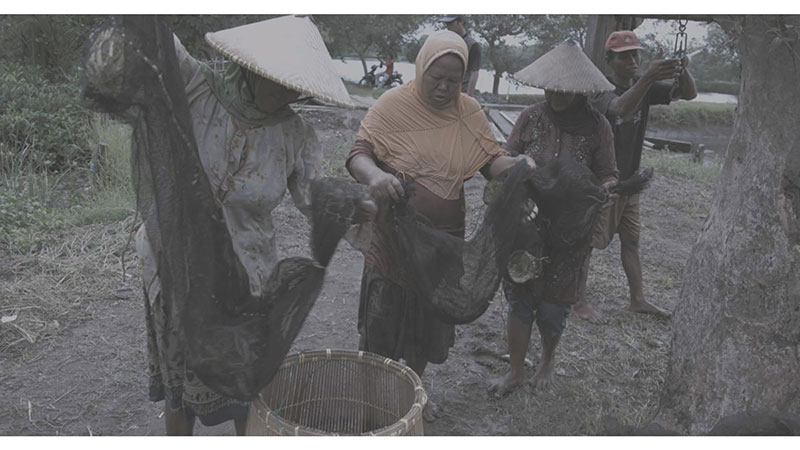
Artists are often at the forefront in providing alternative ways to visualise, conceptualise and experience the environment. This is especially the case when it comes to the relationship between new media and the environment as we begin to take stock of our immaterial and material practices in the carbon footprint. New media metaphors like “clouds” try to disconnect us from the very real physical infrastructure of data storage … the immobile prisons for, and of, our mobile data. Much of our visual culture has focused “on environmental deterioration as an inescapable element of the way in which social media and mobile technologies are experienced globally. Accelerated images of environmental disasters, and more generally of pollution and its impact on the environment, have seemingly become part of our everyday media lives”[1].
Attempts to generate awareness about environmental issues through digital and visual media technologies are riddled with a deep irony.[2] Media technologies generate meaning, but also detritus and disease. According to Eriksen, the global warming narrative, born out of the North Atlantic middle classes, “feeds into an even more comprehensive story about acceleration”[3]. In media studies, subfields like “green studies” have appeared to address the irony of media technologies both generating “meaning, but also detritus and disease”[4]. In particular, artists such as Susan Norrie have been pioneers in providing alternative and poetic ways for thinking through the ironies of the entanglement of humans and data on the environment.
Over the past twenty years, Sydney-based artist Norrie has become well-known for her use of art as a vehicle for political, social environmental commentary. Often combining video with installation, her work has provided a space for reflection, mediation and intervention particularly within the climate change or “Anthropocene” debates. Key proponents of the Anthropocene discussion have argued for the need to understand the environment and its entanglement within the world in more complex ways than just through the human-centric lens. And yet, as Norrie’s current exhibition at the Potter, Susan Norrie: Field Work 2006–2016, illustrates, we can still learn much from different subjective voices in the framing of environmental disasters. Set in East Java, Indonesia, in the site of the LUSI mud volcano, the painterly and also cinematic aftermath (2016) – the sixth work in in the Potter’s series of Vizard Foundation Contemporary Artist Projects – is a meditative contemplation on the terrible sublime of environmental disasters in which humans, while causing such crises, have little power to control and correct.

video still. Courtesy of the artist
In aftermath two scenes are juxtaposed. One scene, reminiscent of Dutch landscape, is a grey, melancholy and moving painting of endless eruptions from the mud volcano. The image is almost still at first and monochromatic – conveying a moment that is both deeply tragic and yet visually mesmerising. Then the oozing and rupture of mud creates a powerful rhythm of which only nature has control of the melody. These images of the terrible sublime are then juxtaposed by the woefully feeble attempts of humans and their machines to control the all-consuming nature. Bobcats seem to be fighting an uphill battle to control the mud slides, humans becoming small, incidental and pithy figures in the overwhelming force of nature. As the museum didactic on Norrie’s work aptly noted, it embodies “a sense of fragile beauty within the unimaginable horror of large-scale environmental destruction”.
Norrie’s work is a poetic and insightful commentary on the terrible beauty of environmental disaster. The work also speaks to broader debates around agency and intervention. If global warming is born out of the Global Northern middle classes, how do we reconcile the politics of the developed first world “gaze” focusing upon third world contexts? What about some of the most horrifying examples of environmental destruction at our very doorstep – such as the Great Barrier Reef? Wherever you sit within the climate change debates, Norrie’s stunning oeuvre demonstrates the power of artists to intervene within mainstream debates about climate change, challenging mainstream visual culture narratives and also its connection to political action. As spectators, it’s up to us to move from these images of accelerated melancholy – and the static nature of this contemplative reflection – to action real world intervention.
Footnotes
- ^ L. Hjorth, S. Pink, K. Sharp, L. Williams, Screen Ecologies: Art, Media, and the Environment in the Asia-Pacific Region. Cambridge, MA: MIT Press, 2016, p. 1.
- ^ Thomas Hylland Eriksen, Thomas Hylland. ‘Living in an overheated world: Otherness as a universal condition’, in Acta Historica Universitatis Klaipedensis, 2009, p. 19.
- ^ Ibid. p. 13.
- ^ Richard Maxwell and Toby Miller, Greening The Media, 2012, Oxford: Oxford University Press, p. 165.

